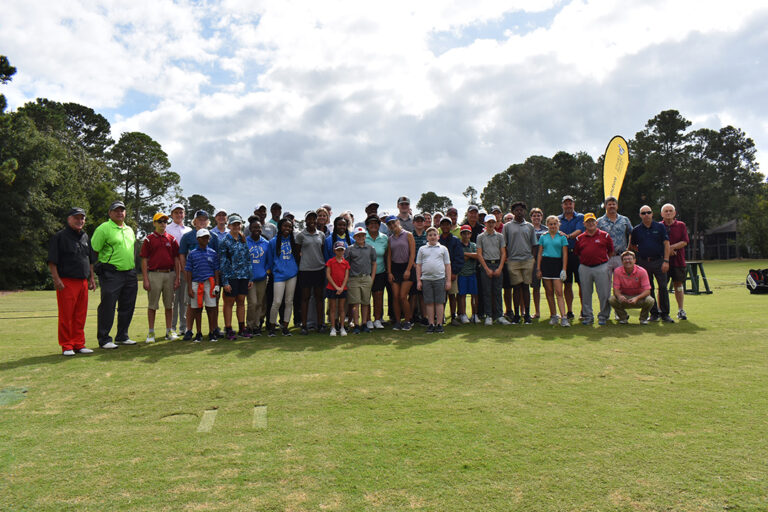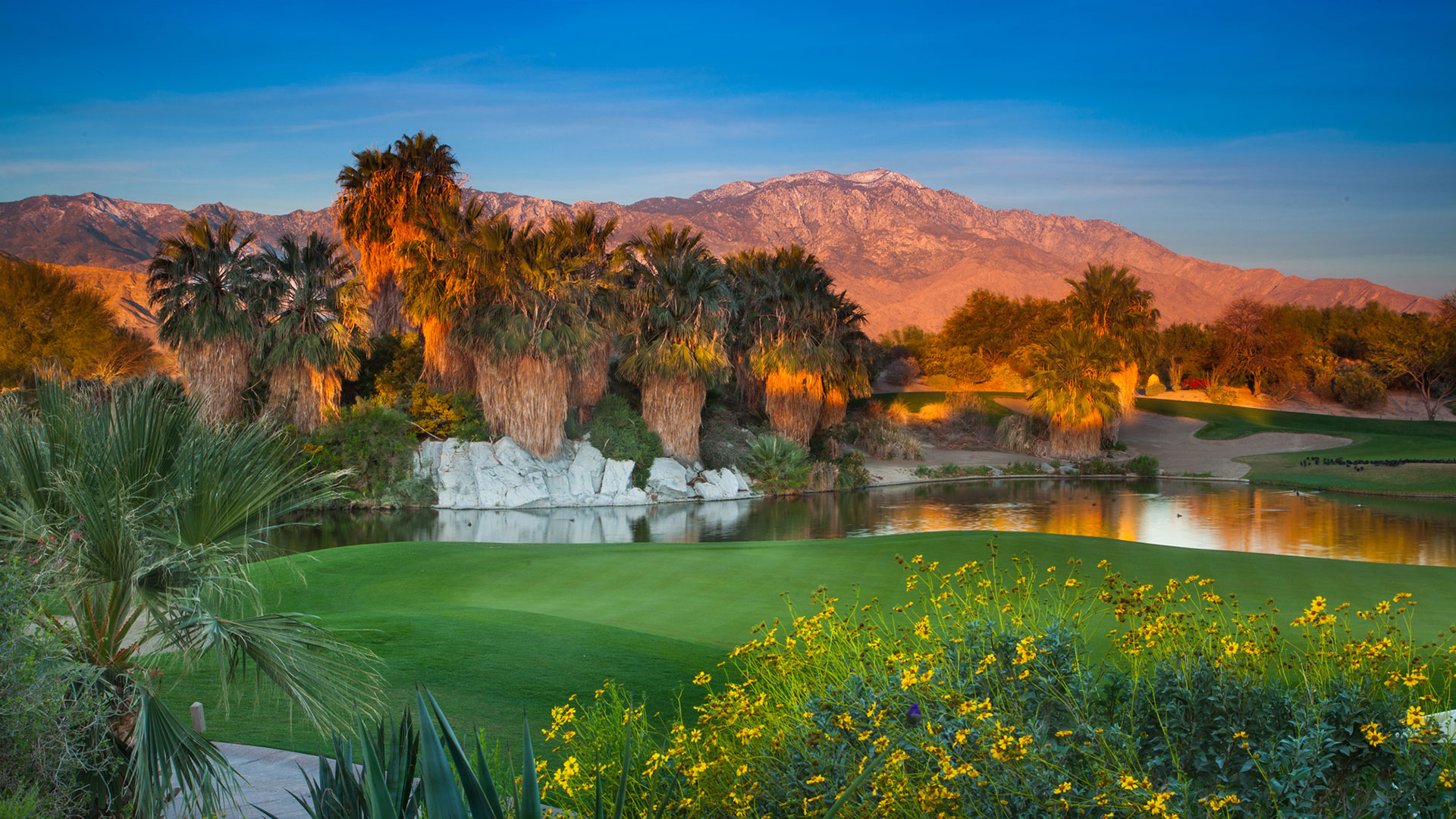Firecliff and Mountain View courses are as good as anything you’ll play in California’s Coachella Valley
PALM DESERT, California (Dec. 14, 2018) – Sometimes keeping up can bring you down. But that’s not the case in Palm Desert, which is one of several golf-endowed cities in California’s Coachella Valley.
About 20 years ago, the city of Palm Desert found a way to keep in stride with the Joneses. Instead of just being happy with authorizing the building of “another” course to spur golfers to play in their town, city officials went one better – or, in this case, two – with a pair of 18-hole layouts at the municipally owned Desert Willow Golf Resort.
Designed by Dr. Michael Hurzdan and Dana Fry, with help from PGA Tour veteran John Cook, Desert Willow’s Firecliff and Mountain View courses opened in 1997 and offer 36 holes of splendid golf.
The Desert Willow facility is the result of years of planning by the city, much of which involved adhering to Mother Nature’s handiwork. Local landscape architect Eric Johnson was brought in to spread color around the grounds via the planting of environmentally sensitive, indigenous plants that require little water.
The golf courses are maintained like a top-notch private club, and the venue stays busy. But play moves along at a good pace, making an outing here almost fly by.
Desert Willow Golf Resort, operated by KemperSports, is as colorful as it is challenging. Firecliff is considered the tougher golf course, due mainly to its forced carries and potentially punitive water hazards. It also has more than 100 bunkers and a gaggle of waste areas than can have a stroke-adding effect during a round.
In comparison, Mountain View is more of a resort layout, with wider landing areas and only four forced carries (and those are over water and none involve undue length). But the fun at Mountain View begins when approaching its smallish putting surfaces, which have demanding surrounds that were added during a 2009 renovation.
Focus needed at Firecliff
Par-72 Firecliff plays 7,056 yards from its back set of five tees (where it carries a rating of 73.6 and 138 Slope). There’s little room for error here as the rolling fairways are merely slender green corridors through the desert, so effectiveness off the tee is key.
All the tees at Firecliff have forced carries and there are a few holes, even from the white tees, that demand a 190-yard carry to find the fairway. For good players, that’s not really a big deal, but even those guys will have an occasional loose swing and will pay the price.
Firecliff rewards dead-on shot-making, and its mid-sized greens feature enough slope that they’re usually kept at lower Stimpmeter readings to allow multiple pin placements. The putting surfaces are well-protected, with water and heavy bunkering fronting many of them.
Sand in various forms enters play on virtually every shot at Firecliff, so be sure the sand wedge is cleaned and ready to go. The routing is enhanced by desert willows, bearded fan palms, acacia trees, oleander bushes and various cacti.
There is no easy-in to a round at Firecliff. The 535-yard par-5 opener – with eight bunkers near the landing area, at the second shot lay-up and beside the green – gets many golfers quickly acquainted with the task at hand. Target-golf aficionados will relish the 194-yard third, which plays across a tree-filled desert wash to a right-sloping putting surface ringed by five bunkers.
The 446-yard, par-4 fourth runs uphill before turning rightward to a green with mounds front and right. The risk-reward, 331-yard par-4 sixth is the first hole that brings the water into play; three sides of its putting surface are engirded by a pond.
Hurzdan/Fry’s craftsmanship is illustrated at the 455-yard par-4 ninth, which sports a lake along the left of the fairway and green, and two bunkers right of the putting surface.
Firecliff’s back nine begins with three par-4s in excess of 427 yards, including the narrow, 452-yard 11th. The 332-yard 15th is a reachable two-shotter and a mirror image of the sixth except that it has a raised green and is fronted by deep sand on the left rather than water.
No. 17 is a 204-yard par-3 with water right and a tee-to-green waste bunker separating the lake from the fairway and putting surface. The closer is not -at 536 yards – super-long, but the par-5 is protected by a creek that squeezes the drive and brings water into play by the green.
Firecliff has to be counted as among the Coachella Valley’s most demanding venues, a target-golf test that will take its pound of flesh.
Smaller greens add teeth to Mountain View
The Mountain View course, also a par-72, has five sets of tees, the longest of which plays at 6,913 yards. A 2009 remodel included a complete reconstruction of the greens and bunker complexes, as well as a renovation to the lakes in an effort to regain contours lost to winds and erosion.
The course rolls through the desert with larger landing areas than Firecliff, and the bunkers are not as plentiful as at its big brother next door. Few are located directly in front of the greens, which usually have open fronts that are conducive to running chips and pitches.
Water hazards enter play on seven holes, some cutting closely in front of the greens. Mountain View is a great golf course for players who like to bomb the ball off the tee and is indeed friendlier than its neighbor, but it should not be taken lightly. From the tips, this is still a tough test, mostly due to its small greens.
The fifth hole, a 227-yard par-3, is a good example of the use of greenside waste areas. Here, the hazard runs down the right side of the hole and turns into a deep bunker before the green.
At 476 yards from the back tee, the par-5 sixth may look easy, but it’s far from a slam dunk, especially if the overzealous finds the water guarding the green. It’s a great risk-reward opportunity.
On the inward half, the 200-yard, par-3 11th has a way of humbling even the best as the tee shot is a total carry over a pond. The bailout area to the left sports a huge, clover-shaped bunker and is not a good option. The 501-yard 12th is another short par-5, but plays uphill and usually into the wind. Its landing area is pinched by three traps left and a waste area right.
No. 15 at Mountain View is a dogleg-left, 386-yard par-4 where the correct play is an aggressive line over the elbow, which holds 10 small but deep bunkers. The approach is tricky because of a well-contoured green.
Mountain View’s closing hole is a par-5 that stretches 538 yards, with sand trouble off the tee. Both the second and third shots need to traverse water. It’s a hole where options abound, epitomizing the experience at Desert Willow Golf Resort.
Mountain View (with a rating of 73.4 and 130 Slope) has its moniker for a reason – of the two tracks at Desert Willow, it offers the best vistas.
Desert Willow’s clubhouse has become one of the Coachella Valley’s top places to unwind and dine, thanks to a recent $6 million renovation. Nearly 200 more seats were added to the interior bar and patio, and fire pits and fireplaces were built overlooking the course.
For more information, visit www.desertwillow.com.
A great nearby place to stay is Westin Desert Willows Villas. For more information or a reservation, go to www.marriott.com/hotels/travel/ctdwi-the-westin-desert-willow-villas-palm-desert











